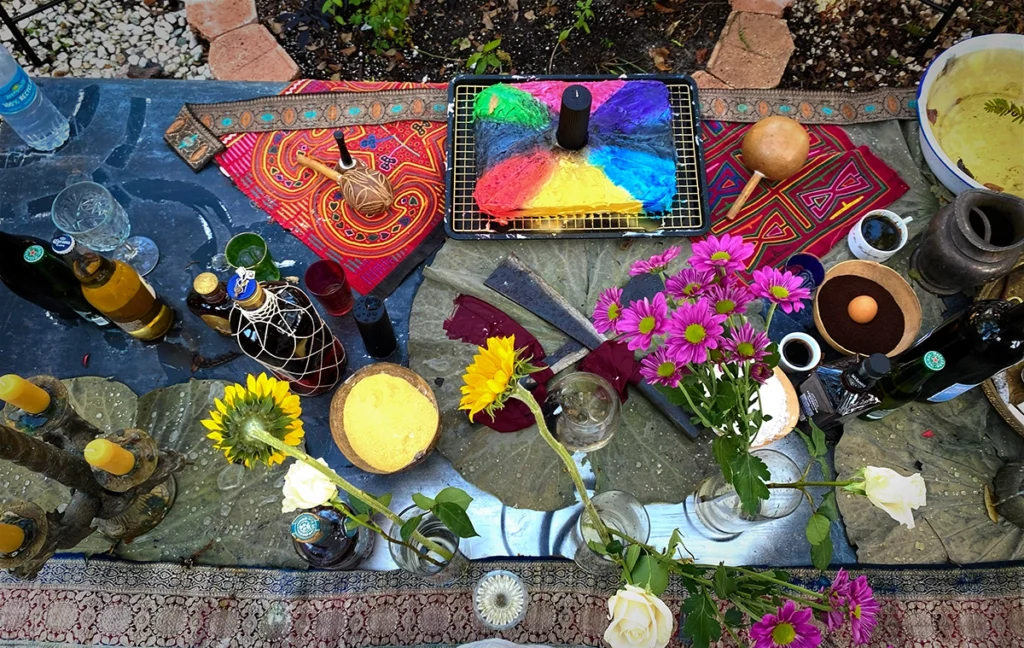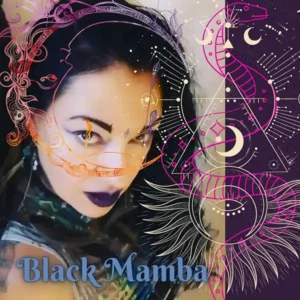
Folkloric art has long been an essential component of Vodou traditions in the Caribbean, serving as both a means of spiritual expression and a tool for ritual practice. The rich artistic traditions embedded in Vodou reflect the syncretic nature of the religion, which blends African, Indigenous Taíno, and European influences into a vibrant spiritual system. Art in Vodou is not merely decorative; it is imbued with deep spiritual significance, serving as a bridge between the material and spiritual worlds.
This blog will explore the history of folkloric art in Vodou, examining its African roots, the influence of colonization and syncretism, and the ways in which it continues to be an active force in spiritual practices today. We will discuss the role of visual arts, ritual objects, drumming, dance, and storytelling, all of which contribute to the sacred and communal experiences within Vodou traditions.
Vodou, like other Afro-Caribbean spiritual traditions, traces its origins to the diverse cultures and belief systems of West and Central Africa. Enslaved Africans who were forcibly brought to the Caribbean brought with them their religious practices, which included a deep reverence for ancestral spirits, nature, and the unseen forces that shape existence.
African spiritual art played a crucial role in Vodou’s development. Masks, sculptures, textiles, and body adornment were not simply artistic expressions but also sacred tools used in communication with the divine. Vodou inherited many of these artistic elements, incorporating them into its ceremonies and rituals. In many African traditions, such as those of the Yoruba, Kongo, and Dahomean peoples, artistic representations of deities (orishas, loas, nkisi) were used to focus spiritual energy, invoke blessings, and protect against harm.
The resilience of these artistic traditions in the face of the brutal conditions of slavery is a testament to their deep cultural and spiritual significance. Even under colonial oppression, Vodou practitioners found ways to preserve their traditions, often disguising their sacred objects and symbols within Catholic iconography to avoid persecution.
With the arrival of European colonizers and the introduction of Christianity, Vodou practitioners had to adapt to survive. This period of forced religious conversion led to the fusion of African religious practices with Catholicism, creating a unique syncretic tradition that incorporated Christian saints with African deities (Loa). This blending of traditions is evident in Vodou art, where Catholic imagery is often reinterpreted with Vodou symbolism.
One of the most striking artistic expressions of this syncretism is the use of veves, intricate symbols drawn on the ground with cornmeal or ashes to summon specific Loa during ceremonies. Each veve carries deep symbolic meaning, often combining African-derived cosmology with Christian motifs. For example, the veve of Papa Legba, the gatekeeper of the spiritual realm, may include elements resembling a cross, which reflects both his African origins and his association with St. Peter in the Catholic tradition.
In addition to veves, Vodou altars (peyis) incorporate a variety of artistic elements, including statues, candles, fabrics, and sacred objects. These altars serve as focal points for spiritual work, honoring the spirits and creating a space for communion between the human and divine realms. The intricate designs of Vodou flags (drapo Vodou) also emerged during this period, becoming one of the most recognizable forms of Vodou artistic expression. These hand-sewn, sequined flags depict Loa, Catholic saints, and other spiritual symbols, reflecting both the resilience of African artistry and the evolving nature of Vodou practice.
Vodou incorporates various folkloric art forms that serve both aesthetic and functional purposes within the religion. These include visual arts, drumming, dance, storytelling, and ritual performance, each of which plays a vital role in maintaining the vibrancy of Vodou traditions.
Visual arts in Vodou are deeply symbolic and serve to reinforce the spiritual and communal aspects of the religion. Beyond veves and flags, Vodou practitioners create sacred bottles, sculptures, and paintings that embody the presence of specific Loa. These objects are often ritually charged with herbs, oils, and other sacred materials to amplify their spiritual potency.
One important aspect of Vodou visual art is the use of mirrors in ceremonial spaces. Mirrors are believed to act as portals between the physical and spiritual worlds, allowing practitioners to receive messages from the Loa. This concept is also evident in the creation of masks and sacred dolls, which serve as conduits for spirit possession and healing work.
Drumming and Music
Drumming is central to Vodou ceremonies, acting as both a form of artistic expression and a means of communication with the divine. Vodou drummers use a variety of rhythms, each associated with different Loa and ceremonial purposes. The most common types of drums in Vodou include the manman (mother) drum, segon (middle) drum, and boula (small) drum.
The rhythms of Vodou drumming create a trance-inducing effect that facilitates spirit possession, allowing the Loa to communicate through the bodies of initiates. The call-and-response patterns in Vodou music also serve to engage the community, fostering a collective spiritual experience that strengthens social bonds.
Dance and Movement
Dance is another crucial component of Vodou folkloric art. Each Loa has its own specific dance movements, which are performed during ceremonies to invoke their presence. These movements are not merely symbolic; they embody the energy and personality of the spirits. For example, the dance of Damballah, the serpent Loa, involves fluid, undulating motions that mimic the movements of a snake, while Ogou, the warrior Loa, is honored with bold, forceful steps that reflect his strength and courage.
The use of dance in Vodou is deeply rooted in African traditions, where movement is seen as a form of communication with the ancestors and divine forces. Through dance, practitioners enter altered states of consciousness, allowing them to receive guidance, healing, and blessings from the spirits.
Storytelling and Oral Tradition
Vodou relies heavily on oral tradition to pass down its teachings, myths, and history. Folkloric storytelling plays a significant role in preserving the knowledge of the Loa, the origins of rituals, and the experiences of past generations. Elders and initiates serve as custodians of these stories, ensuring that the spiritual wisdom of Vodou remains alive.
Many Vodou tales are woven into songs, proverbs, and riddles, making them more accessible to the community. These narratives often contain moral lessons, emphasizing values such as respect, resilience, and spiritual devotion. The power of storytelling in Vodou extends beyond entertainment; it serves as a means of reinforcing cultural identity and maintaining spiritual continuity.
Today, Vodou folkloric art continues to thrive, both within Caribbean communities and in the global diaspora. The artistic traditions of Vodou have gained recognition in the worlds of contemporary art, fashion, and performance, influencing artists, musicians, and filmmakers worldwide.
Despite past misconceptions and stigmatization, Vodou’s artistic expressions are now being celebrated for their cultural and spiritual richness. Vodou flags, paintings, and ceremonial objects are displayed in galleries and museums, while Vodou-inspired music and dance are performed on international stages.
In Haiti, the resurgence of Vodou artistry has also played a role in social and political movements, serving as a means of resistance and empowerment. Artists use their work to honor ancestors, critique injustices, and inspire unity within their communities.
Conclusion
Folkloric art in Vodou is far more than aesthetic decoration; it is a living, breathing testament to the resilience, spirituality, and creativity of its practitioners. From veves and sacred sculptures to drumming, dance, and storytelling, Vodou artistry serves as a bridge between the past and the present, the material and the divine. As Vodou continues to evolve, its artistic traditions remain a vital force in healing, empowerment, and spiritual transformation.

With power, beauty, and abundance
Priestess Shoshana, CEO of Spiritual Teachers Voodoo and Temple de la Luna, Spirit Worker, Instructor, Psychic, Healer, Herbalist, Author
Ready to begin your spiritual journey? Join our mailing list for updates, spiritual tools, and offerings—plus get a free manual. Your path to spiritual empowerment starts here.